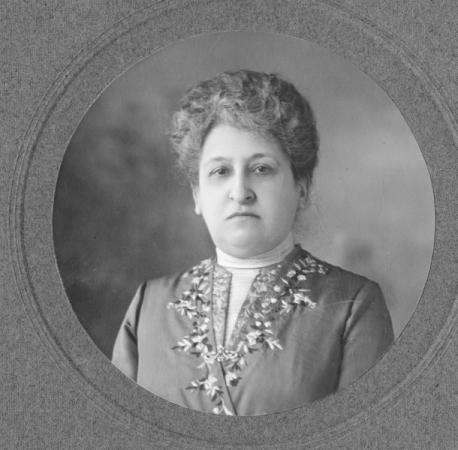On Saturday April 25, a bust was unveiled of Dr. Aletta Jacobs, the first medical doctor in The Netherlands and a prominent women's right activist. Aletta Jacobs was honored with a bust for taking the initiative to organize the International Congress of Women of 1915. The bust is a gift from the Dutch chapter of the Women's International League for Peace and Freedom (WILPF) to the Carnegie Foundation. WILPF arose out of the International Congress of Women of 1915, which took place in The Hague. WILPF is the oldest international women’s peace organization in the world and today it focuses on three key areas: 1) Disarmament; 2) Human Rights; and 3) Women, Peace and Security. WILPF was instrumental in getting the U.N. Security Council to adopt Resolution 1325 (UNSCR 1325), an historic resolution which calls on governments to mainstream a gender perspective into peace and security efforts. Resolution 1325 turns 15 in October 2015.
By Hope Elizabeth May
Aletta Jacobs initiated the 1915 Congress in attempt to put a halt to the first World War, and UNSCR 1325 resonates with the results of the 1915 Congress. For example, one of the 1915 resolutions called for women’s participation in the peace settlement that would end World War 1 (what would become in 1919 The Treaty of Versailles). Unfortunately, this request was ignored by world leaders and women had no voice in the Treaty of Versailles. In 1919, WILPF was the first organization to condemn the Treaty as an unjust peace which planted the seeds for future war.
The 1915 resolution which calls for the inclusion of women in the WW1 Peace Settlement, mirrors a provision in UNSCR 1325 which calls for women’s increased role in conflict prevention and resolution. In a very real way, the goals of the 1915 International Congress of Women are the goals of WILPF 100 years later. At it’s historic centenary Congress in The Hague last week, WILPF adopted and reaffirmed the resolutions of the 1915 Congress.
With Aletta Jacobs’ buste now in the Peace Palace, we are reminded that organized women 100 years ago called for many of the same things that the organized women of WILPF call for today: an end to militarism and call for universal disarmament, the inclusion of women in both domestic and international politics, and an end to the madness and horror of war.
The Aletta Jacobs buste is the second buste of a woman to grace the halls of the Peace Palace. Baroness Bertha von Suttner, the leader of the 19th century peace movement who inspired Alfred Nobel to create his Peace Prize, was the first. For much of her life, Bertha von Suttner preferred to focus on international arbitration and disarmament rather than on women’s rights. In this she was unlike Aletta who saw a connection between women’s rights and international peace and focused her efforts on the former. Eventually, Bertha von Suttner acknowledged the validity of Jacobs’ view and wrote “I am perfectly sure that woman suffrage, once granted, means the work of pacifism running at full speed towards its final goal.” With the statues of Aletta Jacobs and Bertha von Suttner now together in the Peace Palace, we have a beautiful symbolism that reminds us that women’s rights and international peace go hand in hand.
